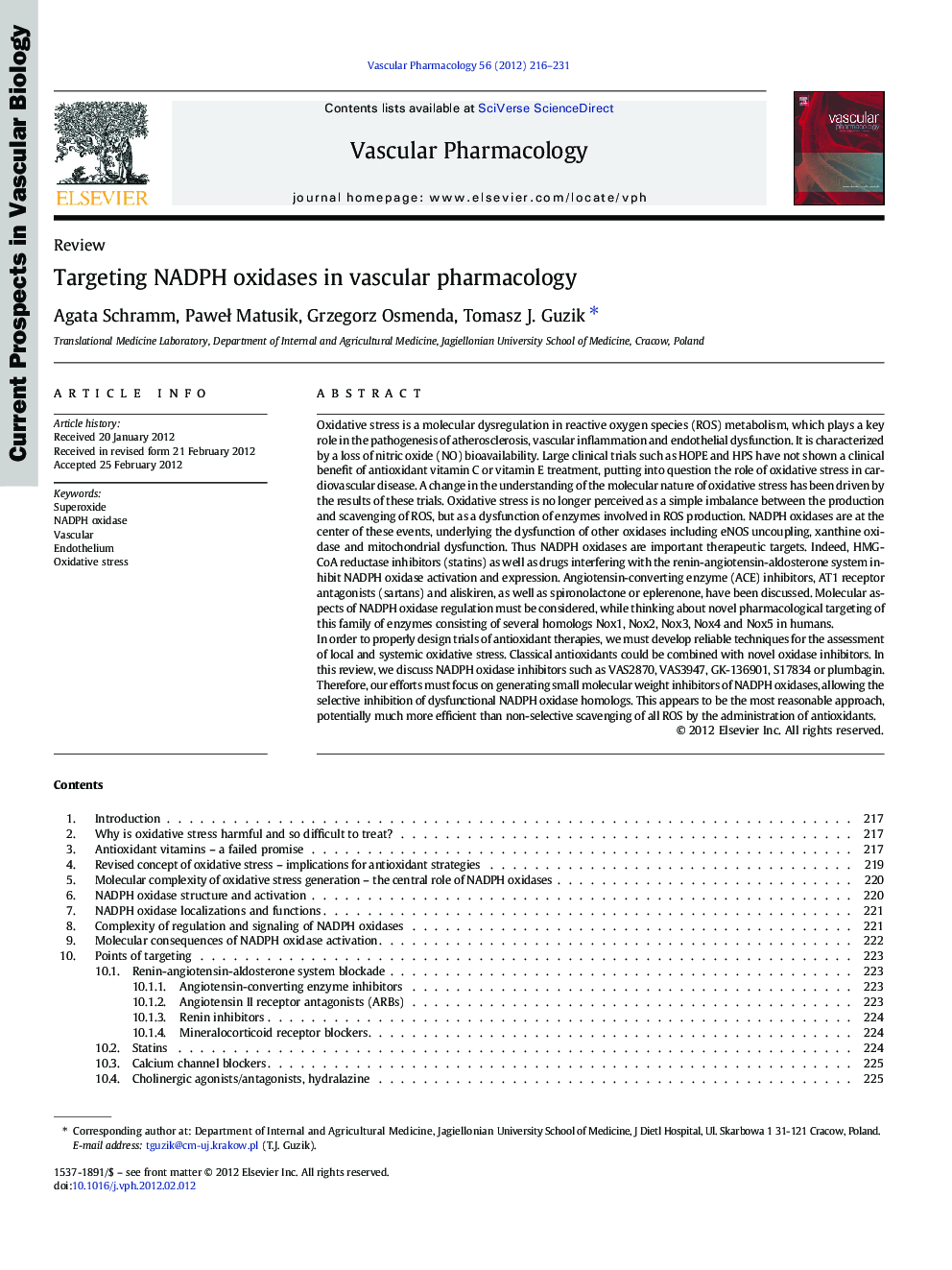| کد مقاله | کد نشریه | سال انتشار | مقاله انگلیسی | نسخه تمام متن |
|---|---|---|---|---|
| 5847380 | 1561261 | 2012 | 16 صفحه PDF | دانلود رایگان |

Oxidative stress is a molecular dysregulation in reactive oxygen species (ROS) metabolism, which plays a key role in the pathogenesis of atherosclerosis, vascular inflammation and endothelial dysfunction. It is characterized by a loss of nitric oxide (NO) bioavailability. Large clinical trials such as HOPE and HPS have not shown a clinical benefit of antioxidant vitamin C or vitamin E treatment, putting into question the role of oxidative stress in cardiovascular disease. A change in the understanding of the molecular nature of oxidative stress has been driven by the results of these trials. Oxidative stress is no longer perceived as a simple imbalance between the production and scavenging of ROS, but as a dysfunction of enzymes involved in ROS production. NADPH oxidases are at the center of these events, underlying the dysfunction of other oxidases including eNOS uncoupling, xanthine oxidase and mitochondrial dysfunction. Thus NADPH oxidases are important therapeutic targets. Indeed, HMG-CoA reductase inhibitors (statins) as well as drugs interfering with the renin-angiotensin-aldosterone system inhibit NADPH oxidase activation and expression. Angiotensin-converting enzyme (ACE) inhibitors, AT1 receptor antagonists (sartans) and aliskiren, as well as spironolactone or eplerenone, have been discussed. Molecular aspects of NADPH oxidase regulation must be considered, while thinking about novel pharmacological targeting of this family of enzymes consisting of several homologs Nox1, Nox2, Nox3, Nox4 and Nox5 in humans.In order to properly design trials of antioxidant therapies, we must develop reliable techniques for the assessment of local and systemic oxidative stress. Classical antioxidants could be combined with novel oxidase inhibitors. In this review, we discuss NADPH oxidase inhibitors such as VAS2870, VAS3947, GK-136901, S17834 or plumbagin.Therefore, our efforts must focus on generating small molecular weight inhibitors of NADPH oxidases, allowing the selective inhibition of dysfunctional NADPH oxidase homologs. This appears to be the most reasonable approach, potentially much more efficient than non-selective scavenging of all ROS by the administration of antioxidants.
469
Journal: Vascular Pharmacology - Volume 56, Issues 5â6, MayâJune 2012, Pages 216-231